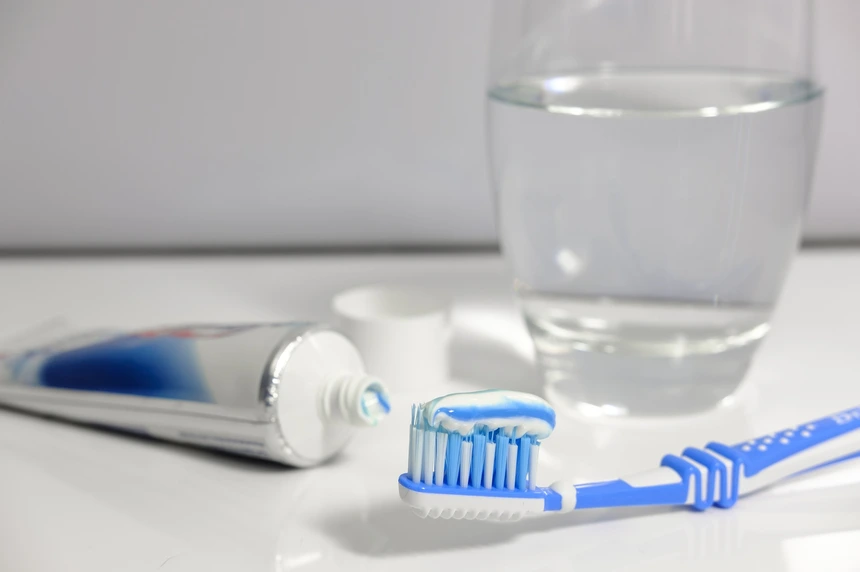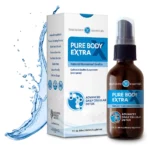What Are Toxins And How Do They Affect Your Body?
I’m going to unravel the concept of toxins for you. Toxins are harmful substances that can cause damage to your body, and they come in various forms ranging from biological to chemical. Whether it’s from something you’ve eaten, the air you breathe, or the products you’ve slathered on your skin, chances are you’ve been exposed to them.
You’re going to find out about their common sources: toxins sneak into our lives through processed foods, polluted air, industrial waste, and even the water we drink. This isn’t just about the toxins you can see or smell; it’s also about the invisible chemicals lurking in items you use daily.
Now consider the heavy hitters among toxins – heavy metals like mercury, aluminum, and lead. These elements are indeed as heavy as their names imply when it comes to the toll they can take on your health. Despite our best efforts, these metals often find their way into our systems, which I’ll delve more into shortly.
That’s going to include a closer look at each metal’s impact on your health in the next section. So, please be sure to sit tight. I’m here to guide you through the specifics of what these metals are and, importantly, what their presence in your body could mean for your well-being.
Specifics of Heavy Metals and Their Impact on Health
When we talk about toxins, heavy metals often come to the forefront because of their significant health implications. These naturally occurring elements are all around us, but in high quantities, they can wreak havoc on our bodies. Let’s take a closer look at some of the most common and concerning heavy metals and how they can affect our health.
Mercury: The Neurotoxin
Mercury can damage the nervous system, affecting the brain, spinal cord, and nerves. It can cause symptoms such as impaired motor skills, memory problems, mood disorders, and in some cases, even cognitive decline. Mercury poisoning can also affect the cardiovascular system, the immune system, and the reproductive system.

To protect yourself from mercury exposure, you should limit your consumption of fish that may contain high levels of mercury, and choose fish that are low in mercury, such as salmon, sardines, and trout. You should also avoid using products that may contain mercury, such as mercury thermometers, skin-lightening creams, and some herbal remedies. You should also consult your dentist about the safety of your dental fillings, and consider replacing them with mercury-free alternatives.
Lead: The Developmental Disruptor
Lead is a metal that has been used for various purposes, such as making pipes, paints, batteries, and ammunition. It can also be found in some pottery, toys, and jewelry. Lead is released into the environment through mining, smelting, and waste disposal. It can contaminate the air, water, and soil, and enter the food chain.

The main source of exposure to lead is through drinking water that has been contaminated by lead pipes or plumbing fixtures. Lead can also be ingested through dust or paint chips that contain lead, especially in older homes or buildings. Lead can also be inhaled through air pollution or occupational exposure.
Lead can damage the brain and the nervous system, affecting the development, learning, and behavior of children. It can also cause anemia, hypertension, kidney damage, and infertility in adults. Lead poisoning can cause symptoms such as headaches, fatigue, irritability, abdominal pain, and even seizures or coma in severe cases.
To protect yourself from lead exposure, you should test your water source for lead levels and use a certified filter if needed. You should also avoid using products that may contain lead, such as old paint, glazed pottery, and some cosmetics. You should also keep your home clean and dust-free, and wash your hands and your children’s hands frequently. You should also wear protective gear if you work in industries that involve lead.
Aluminum: The Controversial Culprit
Aluminum is a metal that is widely used in various applications, such as food packaging, cookware, and antiperspirants. It can also be found in some foods, such as cheese, baking powder, and tea. Aluminum is released into the environment through mining, smelting, and waste disposal. It can accumulate in the soil, water, and plants, and enter the food chain.

The main source of exposure to aluminum is through ingestion, either through food, water, or medicines that contain aluminum, such as antacids and vaccines. Aluminum can also be absorbed through the skin, especially from antiperspirants or cosmetics that contain aluminum.
Aluminum can affect the brain and the nervous system, and some studies have suggested that it may be a potential risk factor for certain types of dementia, such as Alzheimer’s disease. However, the evidence is not conclusive, and more research is needed to establish a causal link. Aluminum can also cause symptoms such as nausea, vomiting, diarrhea, and anemia in high doses.
To protect yourself from aluminum exposure, you should limit your consumption of foods and beverages that may contain high levels of aluminum, such as processed cheese, canned foods, and tea. You should also avoid using products that may contain aluminum, such as antiperspirants, cookware, and cosmetics. You should also drink filtered water and use glass or stainless steel containers instead of aluminum ones.
READ OUR RELATED POST:

How To Remove Aluminum From Your Body?
Discover effective methods to detoxify aluminum from your body. From reducing exposure to natural remedies, take charge of your health with these practical tips. Click here to read this article now.
Arsenic: The Silent Killer
Arsenic is a metalloid that can be found in various forms, both organic and inorganic. It is widely distributed in nature, but it can also be released by human activities such as mining, smelting, and agriculture. Arsenic is often present in groundwater, especially in some regions of the world where it poses a major health threat.

The main route of exposure to arsenic is through drinking contaminated water, but it can also be ingested through food, especially rice and seafood. Arsenic can also be inhaled through air pollution or occupational exposure.
Arsenic is known to cause various types of cancer, especially in the skin, lung, bladder, and liver. It can also damage the nervous system, the cardiovascular system, the respiratory system, and the immune system. Arsenic poisoning can manifest as skin lesions, nausea, vomiting, diarrhea, abdominal pain, and even death in severe cases.
To protect yourself from arsenic exposure, you should test your water source for arsenic levels and use a certified filter if needed. You should also limit your consumption of rice and seafood that may contain high levels of arsenic, and wash them thoroughly before cooking. You should also avoid using pesticides, herbicides, and wood preservatives that may contain arsenic, and wear protective gear if you work in industries that involve arsenic.
Cadmium: The Bone Breaker
Cadmium is a heavy metal that is mainly used in industrial processes such as metal plating, battery manufacturing, and pigment production. It can also be found in some products such as cigarettes, jewelry, toys, and solar panels. Cadmium is released into the environment through mining, smelting, and waste disposal. It can accumulate in the soil, water, and plants, and enter the food chain.

The main route of exposure to cadmium is through smoking, but it can also be ingested through food, especially leafy vegetables, grains, and shellfish. Cadmium can also be inhaled through air pollution or occupational exposure.
Cadmium is known to cause various types of cancer, especially in the kidney, prostate, and lung. It can also damage the bones, the kidneys, the liver, and the reproductive system. Cadmium poisoning can manifest as osteoporosis, osteomalacia, kidney failure, anemia, hypertension, and infertility.
To protect yourself from cadmium exposure, you should quit smoking and avoid secondhand smoke. You should also limit your consumption of foods that may contain high levels of cadmium, and choose organic produce whenever possible. You should also avoid using products that may contain cadmium, and recycle them properly if you do. You should also wear protective gear if you work in industries that involve cadmium.
Nickel: The Allergy Trigger
Nickel is a metal that is widely used in various applications such as stainless steel, coins, jewelry, batteries, and electronics. It can also be found in some foods such as chocolate, nuts, seeds, and legumes. Nickel is released into the environment through mining, smelting, and waste disposal. It can contaminate the soil, water, and air, and enter the food chain.

The main route of exposure to nickel is through skin contact, but it can also be ingested through food or water. Nickel can also be inhaled through air pollution or occupational exposure. Nickel is known to cause allergic reactions in some people, especially in the skin, eyes, nose, and mouth. It can also cause asthma, bronchitis, pneumonia, and lung cancer. Nickel poisoning can manifest as skin rashes, itching, swelling, redness, blisters, and eczema.
To protect yourself from nickel exposure, you should avoid direct contact with nickel-containing objects, and use nickel-free alternatives if possible. You should also limit your consumption of foods that may contain high levels of nickel, and drink filtered water. You should also avoid inhaling dust or fumes that may contain nickel, and wear protective gear if you work in industries that involve nickel.
The sources for these heavy metals aren’t just limited to the obvious; they also hide in plain sight as contaminants in our air, water, and soil. What does this mean for you? Well, maintaining awareness of these metals and how they can enter your life is the first step in protecting your health.
Beyond Heavy Metals: Other Prevalent Toxins
While heavy metals like mercury, aluminum, and lead rightly grab a lot of the spotlight when we talk about toxins, it’s essential to know they’re not the whole picture. There’s a host of other substances we encounter that can be just as concerning for our health. Let’s take a closer look at some of the other prevalent toxins and how they can affect our health.
Fluoride: The Dental Dilemma
Fluoride is a mineral that is naturally found in some rocks, soils, and waters. It is also added to some public water supplies, toothpastes, and mouthwashes to prevent tooth decay. Fluoride can strengthen the enamel of the teeth and protect them from cavities. However, too much fluoride can also have negative effects on health.

The main source of exposure to fluoride is through drinking fluoridated water, but it can also be ingested through food, beverages, or dental products that contain fluoride. Fluoride can affect the bones and the teeth, causing a condition called fluorosis. Fluorosis can manifest as white or brown spots, stains, or pits on the teeth, or as bone pain, fractures, or deformities in severe cases.
Fluoride can also affect the thyroid gland, the brain, and the nervous system, and some studies have suggested that it may be a potential risk factor for certain types of cancer, such as osteosarcoma. However, the evidence is not conclusive, and more research is needed to establish a causal link.
To protect yourself from fluoride exposure, you should limit your consumption of fluoridated water, and use a filter if needed. You should also limit your use of dental products that contain fluoride, and follow the instructions on the label. You should also avoid using fluoride supplements, unless prescribed by your doctor or dentist.
READ OUR RELATED POST:
What does Fluoride do to your Body?
Fluoride is added to water, toothpaste, and other products to prevent tooth decay. But fluoride can also harm your health in many ways. It can affect your thyroid, bones, brain, kidneys, and more. How can you avoid fluoride exposure and detoxify your body from it? Click here to read this post to learn the truth about fluoride and how to protect yourself.
BPA: The Hormone Hacker
BPA, or bisphenol A, is a chemical that is used to make some plastics and resins, such as polycarbonate and epoxy. It is also found in some products such as water bottles, food containers, cans, receipts, and medical devices. BPA is feared as an endocrine disruptor, which means it can interfere with the body’s hormone-related processes.

The main source of exposure to BPA is through ingestion, either through food or beverages that have been stored or heated in plastic containers or cans that contain BPA, or through licking or touching receipts that contain BPA. BPA can also be absorbed through the skin, especially from personal care products that contain BPA.
BPA can affect the reproductive system, the metabolic system, the cardiovascular system, and the immune system. It can cause symptoms such as infertility, menstrual irregularities, obesity, diabetes, heart disease, and allergies. BPA can also affect the development, learning, and behavior of children.
To protect yourself from BPA exposure, you should avoid using plastic products that contain BPA, and look for BPA-free alternatives. You should also avoid heating food or beverages in plastic containers or cans that contain BPA, and use glass or ceramic instead. You should also avoid touching or licking receipts that contain BPA, and wash your hands after handling them. You should also avoid using personal care products that contain BPA, and choose natural or organic options.
Pesticides: The Food Foe
Pesticides are chemicals that are used to kill or repel pests, such as insects, weeds, fungi, or rodents. They are widely used in agriculture, gardening, and public health. Pesticides can help to protect crops and prevent diseases, but they can also pose health risks to humans and animals.

The main source of exposure to pesticides is through ingestion, either through food or water that has been contaminated by pesticides, or through accidental or intentional poisoning. Pesticides can also be inhaled through air pollution or occupational exposure, or absorbed through the skin, especially from clothing or bedding that has been treated with pesticides.
Pesticides can affect the nervous system, the endocrine system, the immune system, and the reproductive system. They can cause symptoms such as headaches, nausea, vomiting, dizziness, tremors, seizures, and even coma or death in severe cases. Pesticides can also cause various types of cancer, such as leukemia, lymphoma, and brain cancer.
To protect yourself from pesticide exposure, you should limit your consumption of foods that may contain high levels of pesticides, and choose organic or locally grown produce whenever possible. You should also wash and peel your fruits and vegetables before eating them, and remove the outer leaves of leafy greens. You should also avoid using pesticides in your home or garden, and use natural or non-toxic alternatives. You should also wear protective gear if you work in industries that involve pesticides.
Household Chemicals: The Hidden Hazards
Household chemicals are substances that are used for various purposes, such as cleaning, disinfecting, deodorizing, or beautifying. They are found in many products, such as detergents, bleach, ammonia, air fresheners, candles, and cosmetics. Household chemicals can make our lives easier and more pleasant, but they can also have negative effects on health.

The main source of exposure to household chemicals is through inhalation, either through using or spraying the products or through breathing the vapors or fumes that they emit. Household chemicals can also be ingested through accidental or intentional poisoning, or absorbed through the skin, especially from personal care products that contain chemicals.
Household chemicals can affect the respiratory system, the skin, the eyes, the nose, and the mouth. They can cause symptoms such as irritation, inflammation, burns, allergies, and asthma. Household chemicals can also affect the nervous system, the liver, the kidney, and the reproductive system. They can cause symptoms such as headaches, drowsiness, confusion, depression, and even neurological disorders.
To protect yourself from household chemical exposure, you should limit your use of products that contain chemicals, and look for natural or non-toxic alternatives. You should also use the products in well-ventilated areas, and follow the instructions on the label. You should also store the products in a safe place, away from children and pets. You should also avoid mixing different products, as they may create harmful reactions. You should also wear protective gear if you work in industries that involve household chemicals.
Parabens: The Preservative Problem
Parabens are a group of chemicals that are used as preservatives in some products, such as cosmetics, personal care products, pharmaceuticals, and food. Parabens can help to prevent the growth of bacteria, fungi, and mold, and extend the shelf life of the products. However, parabens can also have negative effects on health.

The main source of exposure to parabens is through absorption, either through the skin, especially from cosmetics or personal care products that contain parabens, or through the mouth, especially from food or medicines that contain parabens. Parabens can also be excreted in urine, sweat, or breast milk, and enter the environment.
Parabens are feared as endocrine disruptors, which means they can interfere with the body’s hormone-related processes. Parabens can affect the reproductive system, the metabolic system, the immune system, and the skin. They can cause symptoms such as infertility, menstrual irregularities, obesity, diabetes, allergies, and eczema. Parabens can also cause various types of cancer, such as breast cancer, ovarian cancer, and prostate cancer.
To protect yourself from paraben exposure, you should avoid using products that contain parabens, and look for paraben-free alternatives. You should also check the labels of the products you use, and look for ingredients that end with “-paraben”, such as methylparaben, propylparaben, or butylparaben. You should also choose natural or organic products whenever possible, and use them sparingly.
READ OUR RELATED POST:

Parabens: The Hidden Danger in Your Personal Care Products
Parabens are preservatives in cosmetics, but they can harm your health. Parabens can disrupt your hormones and increase the risk of cancer and infertility. You need to know how to avoid them. Click Here to discover the reasons and tips to go paraben-free and keep your skin and body healthy.
Phthalates: The Plasticizer Peril
Phthalates are a group of chemicals that are used to make plastics more flexible, durable, and transparent. They are also used as solvents, lubricants, and fragrance carriers in some products, such as toys, vinyl flooring, shower curtains, medical devices, and cosmetics. Phthalates can help to improve the quality and performance of the products, but they can also pose health risks to humans and animals.

The main source of exposure to phthalates is through ingestion, either through food or water that has been contaminated by phthalates, or through chewing or sucking on plastic products that contain phthalates. Phthalates can also be inhaled through air pollution or occupational exposure, or absorbed through the skin, especially from personal care products that contain phthalates.
Phthalates are feared as endocrine disruptors, which means they can interfere with the body’s hormone-related processes. Phthalates can affect the reproductive system, the developmental system, the metabolic system, and the liver. They can cause symptoms such as infertility, birth defects, obesity, diabetes, and liver damage. Phthalates can also affect the respiratory system, the immune system, and the skin. They can cause symptoms such as asthma, allergies, and dermatitis.
To protect yourself from phthalate exposure, you should avoid using products that contain phthalates, and look for phthalate-free alternatives. You should also check the labels of the products you use, and look for ingredients that contain the word “phthalate”, such as diethyl phthalate, dibutyl phthalate, or dimethyl phthalate. You should also choose natural or non-toxic products whenever possible, and use them sparingly.
Other Relevant Toxins: The Miscellaneous Menace
Besides the toxins that we have discussed so far, many other substances can have negative effects on our health. Some of these toxins are naturally occurring, such as radon, asbestos, or mold, while others are man-made, such as dioxins, PCBs, or formaldehyde.

These toxins can be found in various places, such as our homes, workplaces, or outdoors. They can affect different parts of our body, such as our lungs, our skin, our blood, or our DNA. They can cause different types of diseases, such as cancer, respiratory problems, immune disorders, or genetic mutations.
The sources and effects of these toxins are too numerous and diverse to cover in detail in this blog post, but you can find more information online or from reliable sources. The main point is to be aware that these toxins exist and to take measures to avoid or reduce your exposure to them.
Some of the general tips that we have shared for the other toxins also apply to these toxins, such as choosing natural and organic products, eating a healthy and balanced diet, and supporting initiatives that aim for a cleaner and safer world.”
With all these sources of toxins creeping into our day-to-day lives, you might be thinking it’s time for a change – and you’re right. In the next section, I’m here to help you with some tips on detoxifying your life. We’re talking about practical steps you can take to minimize exposure and defend your body against these unwanted guests.
Safeguarding Your Health: Detoxification and Prevention
Now, knowing the risks associated with heavy metals and other toxins, it’s critical to focus on how we can protect ourselves. It’s not just about avoiding these substances; it’s also about actively removing them from our bodies and our environment.

First off, when it comes to minimizing your exposure, it’s about making informed decisions. Choose products, whether it’s food, cookware, or personal care items, that are known for being free of common toxins. It can be as simple as opting for glass containers over plastic ones with BPA.
Your diet is a powerful tool for detoxification. Eating foods high in antioxidants, fiber, and essential nutrients helps to support your body’s natural detoxification processes. Think colorful fruits and vegetables, plenty of clean water, and foods rich in compounds like sulfur that boost detox enzymes in the liver.
It’s not just personal choices that matter, though. Advocating for stricter regulations around the use of toxins helps to reduce the overall burden on our health. Support initiatives that aim for cleaner air, water, and soil, and engage with community efforts aiming to create healthier living spaces.
It’s essential to recognize that detoxifying our lives is an ongoing process. Start small if you need to, but keep going. Choose something that resonates with you, like starting a garden to grow your own organic produce or switching to a more plant-based diet. Every effort counts toward a less toxic life.
Conclusion
You’ve made it to the end of this blog post, and I hope you’ve learned a lot about toxins, their sources, their effects, and their prevention. You’ve also learned that toxins are not just a buzzword, but a real and serious threat to your health and well-being. But don’t worry, you’re not helpless against them. You have the power to make choices that can reduce your exposure and enhance your detoxification.
The key is to be aware, informed, and proactive. Be aware of the sources of toxins in your environment, and avoid them as much as possible. Be informed of the studies and research on toxins and their health impacts, and stay updated on best practices for reducing toxin exposure. Be proactive and take action to detoxify your life, by choosing natural and organic products, eating a healthy and balanced diet, and supporting initiatives that aim for a cleaner and safer world.
I hope this blog post has inspired you to take charge of your health and your life, and to make a positive change for yourself and the planet. Remember, every effort counts toward a less toxic life. Don’t be discouraged if change feels slow. Remember, you can always adjust your approach down the road. Keep learning and stay updated on best practices for reducing toxin exposure. By taking proactive steps today, you’re laying the groundwork for a healthier tomorrow. Your body—and the planet—will thank you.
VIEW OUR RECOMMENDED PRODUCT:
Get an Extra Powerful Detox with Pure Body Extra
Pure Body Extra is a nano-sized Clinoptilolite Zeolite liquid for daily use, that removes toxins and heavy metals at the cellular level. Click Here to learn how Pure Body Extra provides an Extra Powerful Detox and will detoxify your body like never before!








